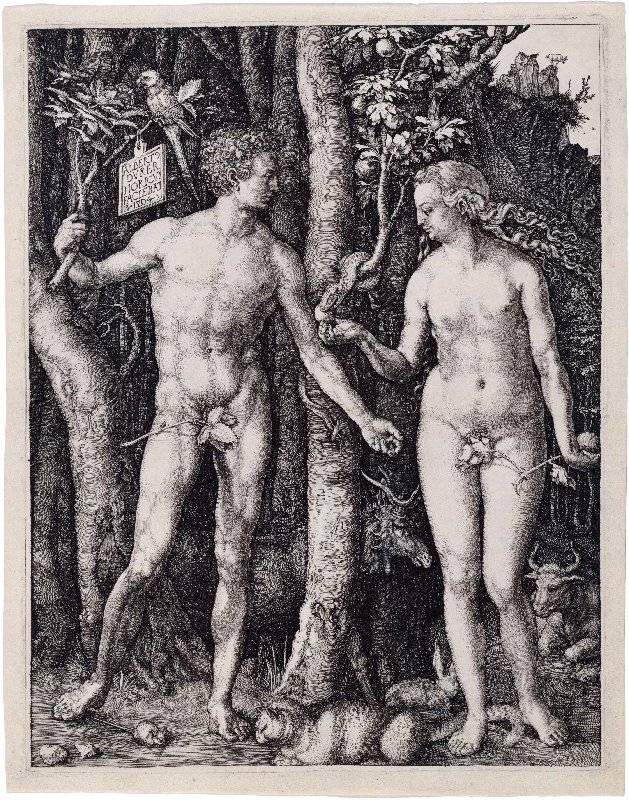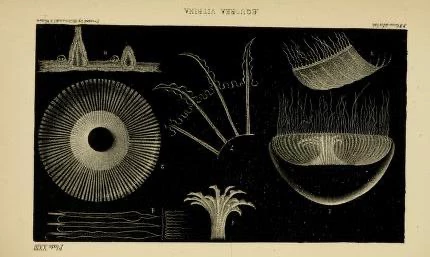The mode of writing of the family memoir and history presented here is not original. Tolstoy is deliberately quoted but unackowledged, and the whole is considered using ideas drawn from Edmund Gosse, Father and Son. As well, I have always been fascinated by Phillip Henry Gosse's Omphalos Theory. A learned article is here
Omphalos Theory
The Theory was developed in support of a biblical instant of creation, to refute Darwin's evolution. The Theory is that Adam was created with a navel. He didn't need a navel as he was created not born. This was extended to include all of nature. Natural objects must be created with a history, or at least with the appearance of one. A natural object can't be a natural object without an apparent history. A tree would not be a tree without rings, which indicate its age, and even a newly created tree must have rings.
 *Adam and Eve have navels, but never had umbilical cords.
*Adam and Eve have navels, but never had umbilical cords.
The whole organisation of the creature thus newly called into existence, looks back to the course of an endless circle in the past. Its whole structure displays a series of developments, which as distinctly witness to former conditions as do those which are presented in the cow, the butterfly, and the fern, of the present day. But what former conditions? The conditions thus witnessed unto, as being necessarily implied in the present organisation, were non-existent; the history was a perfect blank till the moment of creation. The past conditions or stages of existence in question, can indeed be as triumphantly inferred by legitimate deduction from the present, as can those of our cow or butterfly; they rest on the very same evidences; they are identically the same in every respect, except in this one, that they were unreal. They exist only in their results; they are effects which never had causes. Perhaps it may help to clear my argument if I divide the past developments of organic life, which are necessarily, or at least legitimately, inferrible from present phenomena, into two categories, separated by the violent act of creation. Those unreal developments whose apparent results are seen in the organism at the moment of its creation, I will call prochronic, because time was not an element in them; while those which have subsisted since creation, and have had actual existence, I will distinguish as diachronic, as occurring during time. Now, again I repeat, there is no imaginable difference to sense between the prochronic and diachronic development...
Recovered memory syndrome
Being history minded I have enjoyed taking this a step further, and outside of the biblical realm. If natural objects can include unreal evidence of histories that were a perfect blank till the moment of creation, then so can memory. It is possible that we and that all we see, experience and remember were created in an instant a week ago, an hour ago, or a minute ago, by an unknowable all powerful god. What we remember of our lives was created at the same time as our bodies and all of nature were, and is unreal.
The theory is not able to be refuted by scientific method as it is a closed circle, and if believed, a matter of faith. I am drawn to this. It allows for a respect for the historical, but also for a skepticism towards it. This can be extended to other history related projects such as heritage, and the politics of identity.
 *Sea creatures drawn by P.H.Gosse
*Sea creatures drawn by P.H.Gosse
Russell, Borges
*Bertrand Russell’s reductio ad absurdum of the omphalos hypothesis, in The Analysis of Mind (1921), was that the world might just as well have been created five minutes ago, our memories and all. Jorge Luis Borges discussed this in his 1941 essay “The Creation and P H Gosse” and alluded to it in his short story Tlön, Uqbar, Orbis Tertius (1941), in which he wrote that “one of the schools of philosophy on Tlön goes so far as to deny the existence of time; it argues that the present is undefined and indefinite, the future has no reality except as present hope, and the past has no reality except as present recollection.” Blog on navels